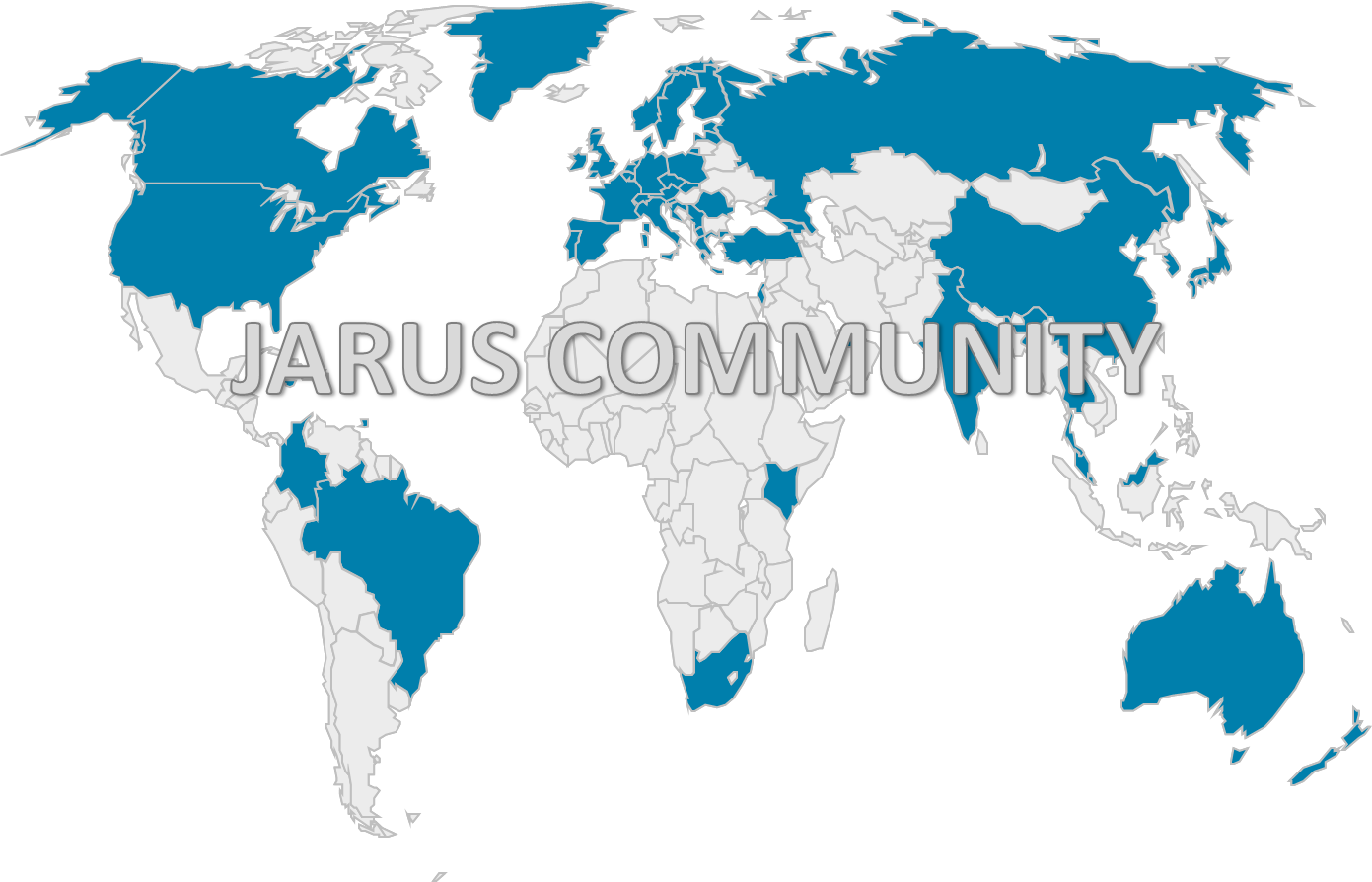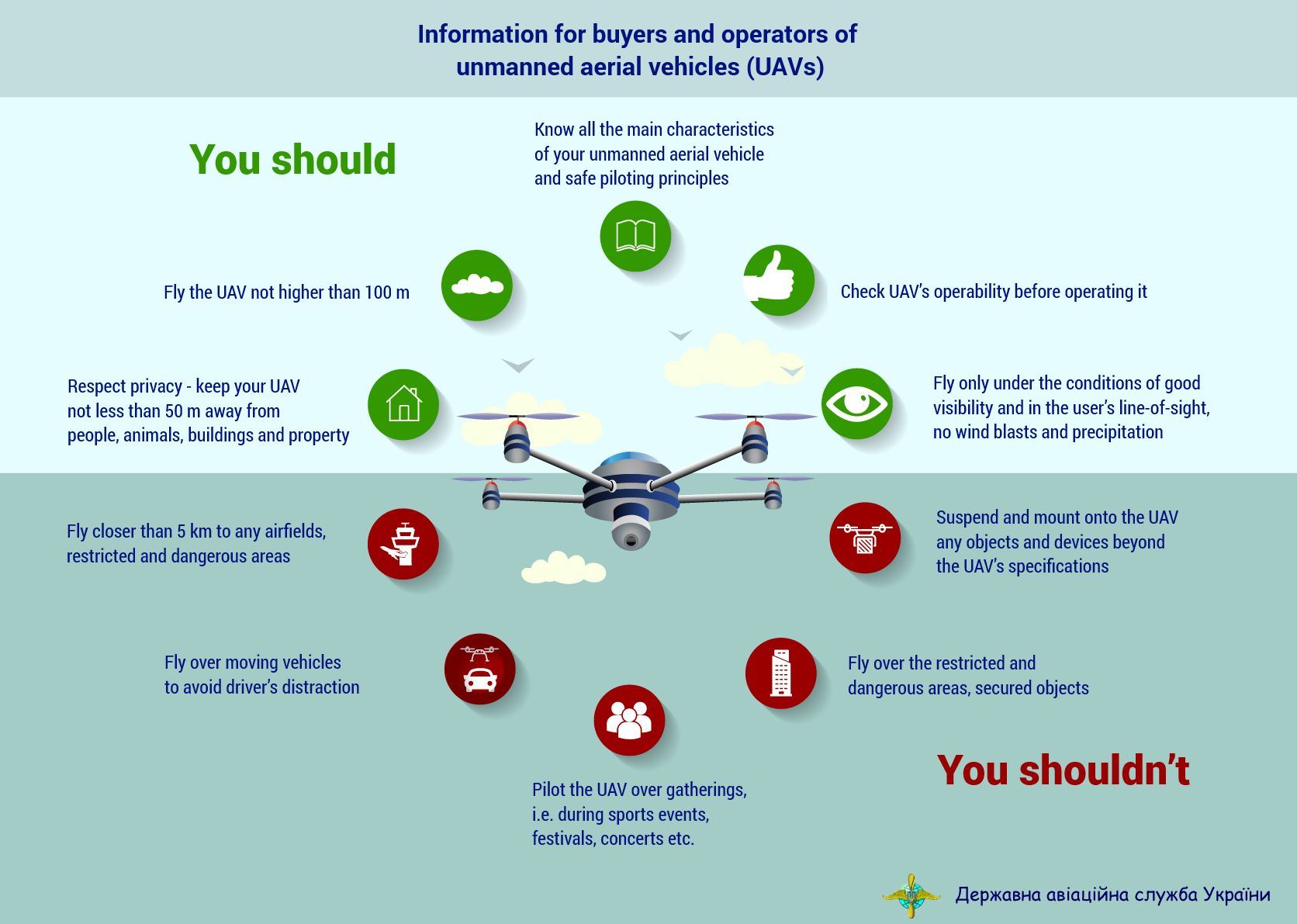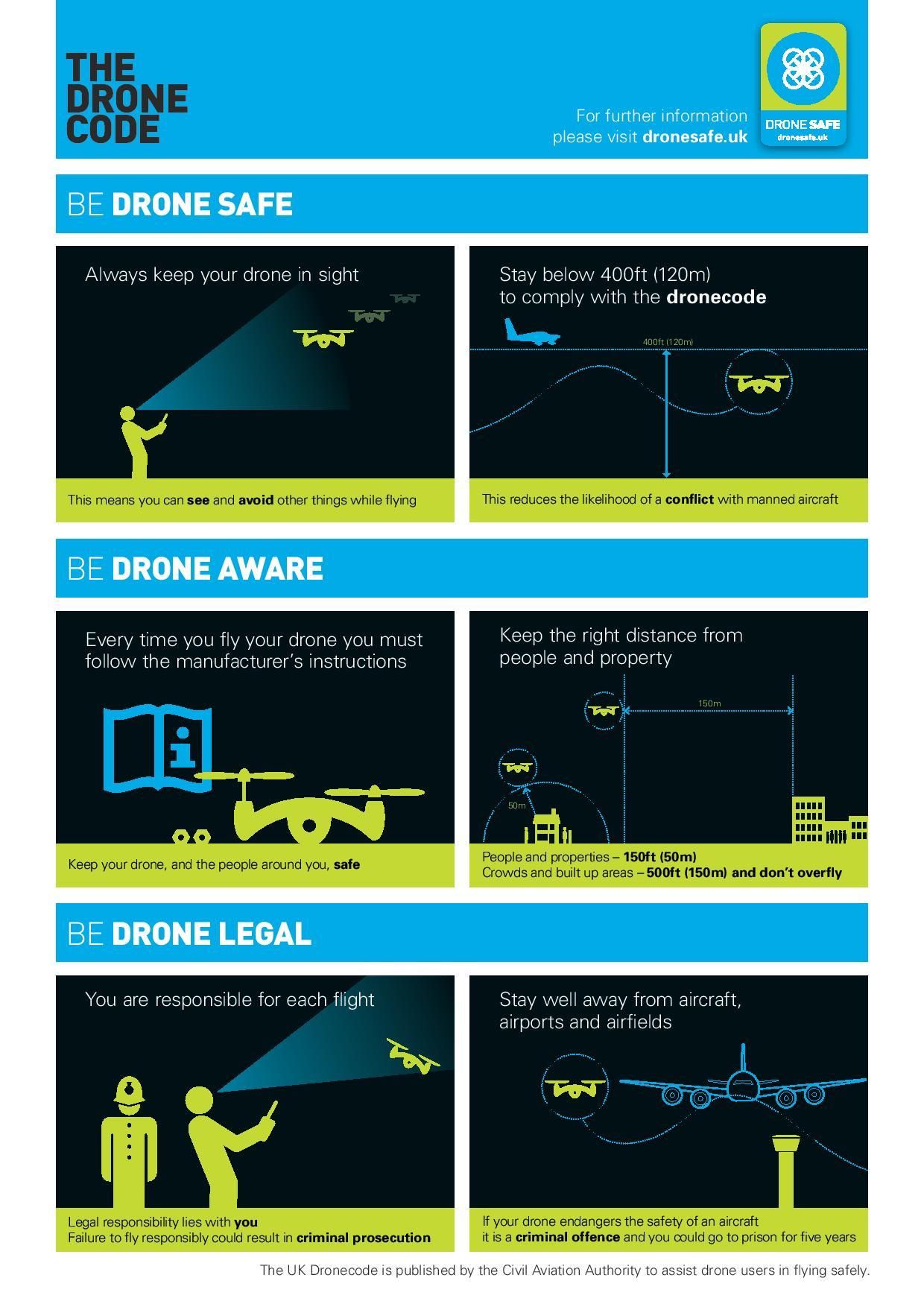The uncontrolled widespread increase of UAVs (commonly known as “unmanned aerial vehicles” – drones) in the world with accompanying risks related to planes and ground-based property, the life of people, privacy, trespassing, and security demand new regulation from the legislators. Although we don’t see a plenty of drones in Ukrainian sky, such facts as the quite impressive development of national drones industry and the war conflict with Russia require the qualified look from the legislator. Duties undertaken according to the international treaties, including European Union Association Agreement, obliged Ukraine to adopt laws that comply with united airspace system.
Recent events gave a new impulse to Ukrainian drones industry. Business (agriculture, logistics, media, etc.) and military players see significant values in these machines. Moreover, being growing internationally, the manufactures of technical and software elements and services are looking forward to present their competitive products abroad. A more detailed overview about drones in Ukraine can be found in the article.
It is important to mention that there is a limited amount of professional literature about legal aspects of the use of UAVs in Ukraine. Mostly, articles and research are dedicated to military and technical purposes. The goal of this article is to discuss already presented legal issues with an account for the new world trends.
Current legislation status
European Aviation Safety Agency is taking efforts to regulate drones in common European space. Moreover, an international group of experts is working on developing standards for UAVs, including secure integration of small and large UAV in the airspace and airports. Although Ukraine is not a member of this organization, the country as a part of the international air space is obliged to create safe conditions for civil aircraft. Moreover, being a very soon member of united European sky, Ukraine needs to implement new legislation in accordance with general standards.

It is worth mentioning that UAVs are defined in the current legislation, but their usage is not specifically regulated and they are partially described among the broad group of civil and commercial aircraft according to the airspace regulation. In general, there aren’t any specific regulatory documents on flights of UAVs, certification, and attestation of operators, and integration into air traffic management environment.
UAVs fall under the regulation of the current laws: Air Code of Ukraine, the Rules of Civil Aircraft Registration in Ukraine, Regulation on Use of the Airspace of Ukraine, Rules of Civil Aircraft Flights in the Airspace of Ukraine. Thus, “unmanned aerial vehicle” is defined as any aircraft intended to fly without a pilot on board, the flight; control of such vehicles is performed by a special control station not located onboard the vehicle.
Such UAVs need to be listed under the Registry of Civil Aircraft of Ukraine. However, UAVs that weight not more than 20 kg and are designed for entertainment and sports activities are not required for registration.
Just as other civil aircraft, registered UAVs are not allowed to fly in various areas, namely, protected (governmental buildings, industrial objects), restricted (military, border control, and research actions, etc.), or reserved for other flying objects. Users that are interested in a specific area need to send a request to the Ukrainian State Air Traffic Service Enterprise.
To sum up, there is a clear limitation to drones usage at high altitudes where they can violate the agreed routes of planes and other aircraft. In contrast, drones weighting less than 20 kilograms didn’t need registration and any permission for flights from state agencies. Moreover, there is no restriction to use drones in cities for private purposes, except in restricted strategically important national areas.
Recent legislative improvements
General policy paper
In May of 2016, State Aviation Administration of Ukraine published the draft of the conceptual provisions and procedures for the safe use of UAVs. Originally planning to prepare the draft of regulation to the end of the year 2016, it was postponed for more than a year. Nevertheless, the content of the draft shows that legislator has a goal to put all UAVs under clear legal regulation.
The document consists of the following chapters:
- Classification, registration of UAVs;
- Training and certification of personnel;
- Medical requirements for operators, UAV integration to the general air motion system;
- Licensing and certification of UAV’s operators for commercial use, insurance issues;
- Monitoring and security of UAVs activities.
These provisions duplicated general provisions of the European Parliament resolution on the safe use of so-called, remotely piloted aircraft systems (RPAS), commonly known as unmanned aerial vehicles (UAVs), in the field of civil aviation. On the other hand, the draft seems to be in compliance with the Convention on International Civil Aviation, which obliged states to provide safe conditions for civil aircraft in the areas where drones are used.
General guidelines
Afterwards, in August of 2016, the aviation administration prepared quite short and general guidelines on recommended use of drones. In short, it looks rather similar, namely, to European Aviation Safety Agency’s and United Kingdom’s guidelines. These provisions determine rights and limitations for drone operators.


However, as was mentioned, these are only recommendations and, therefore, they are not enforceable. Taking into account current practice in the world, these conditions will likely be put as the basis for the new legislation that is being drafted now.
A specific regulation
Nevertheless, only 3 months ago the draft for drones’ regulation was presented as a basis for the public discussion. Depending on specifications of drones, their usage will have four different requirements for the pilots and flight conditions.
We don’t know exactly what the drone regulation will look like in Ukraine in the nearest future. However, we know for sure that the lack of appropriate funding could be an important factor that will impact the whole conception of UAVs regulation in Ukraine. A more developed system, for instance, such as creating an online database to track and manage drone traffic or “detect and avoid” technology, requires more resources.
Therefore, Ukrainian agencies will try to find consensus on building the basic, but functional system. From this perspective, it seems a reasonable decision of civil aviation authority to divide the implementation of UAVs regulation into two phases (registration and integration into common air space).
Analysis of prospective regulation of drones
Let’s predict how the Ukrainian system can respond to current demands, based on the conception and foreign experience. Further, below I will describe several important aspects of drones’ regulation.
- Registration
To put it simple, drones are following the same route, as previously cars did, with registration. As was mentioned before, weight, speed, and possible damage are paramount features that will determine the necessary steps for registration process. I hope that such registration will be created on an easy, fast and comfortable online platform.
- Use
Today, flying above cars, people and during massive events is not directly forbidden, but operators will likely lose a part of such rights. Moreover, drones are considered to be double purpose goods. As the result, each locally produced or imported drone must be checked on its war capacities. Indeed, technology development shows that the line between military and civil drones is “thin” today. For instance, we can recall the dangerous use of drones in Japan, Iraq, or Ukraine, when Russian drones made sabotage on military bases by use of the flammable material to destroy machinery.
A broad range of interested parties that include manufacturers, agriculture companies, Ministry of Defense and law enforcement bodies, Ministry of Economic Affairs and Trade of Ukraine, and State Aviation Administration of Ukraine have the opportunity to lobby their positions on drones use. In the current situation with ongoing war conflict, Ministry of Defense, Security Service, together with aviation agency will lobby more conservative propositions. In contrast, although natural persons and business understand such concerns, they will reasonably stay their ground on simple procedures for small and non-dangerous drones and not over regulated for these that have big capacities.
Nevertheless, unlike Russian, Belarus, and Thailand’s experience of UAVs restriction regulation, Ukraine must look forward to a balanced system that will stimulate the use and manufacturing of national drones and will guarantee the safe use for all interested parties.
- Insurance
The kind of situation was evident in the U.S. and caused a big concern of state officials with possible damages to the property and the health of people. Afterwards, such companies as Unmanned Risk Management, CoverDrone and AIG started providing insurance service for the drones’ operators.
Therefore, the requirement to buy insurance for drones will not be a novelty on the Ukrainian market. It seems that state will give freedom of contract provisions to the parties that determine, namely, loss or damage to the UAVs and the liability for damages to third parties.
In general, insurance conditions could vary depending on the level of potential risk of UAVs (low, medium, and high). During the insurance case, the important facts could be medical conditions of operators, the conduct of a preflight inspection, and availability of a flight log. Moreover, it is also important to consider provision with hacking or theft for the liability.
- Privacy and data
It is clear that the personal privacy today is under defined and is limited in protection due to government surveillance cameras, mobile photos and videos and online streams. Drones have opened quite a sensitive topic of practical implementation of such protection. They can gather a lot of sensitive information, including a list of locations, sound, and, of course, the faces of people. Moreover, an offended person is not able to detect the offender and identify his intent. An interesting example happened in the U.S. where a husband found that his wife cheats on him.
Such data gathering and data processing lead to the conclusion that borders between surveillance and private zone are, probably, uncertain today. Therefore, at least from the technical and legal perspective, it is reasonable to adopt specific provisions regarding storage and deletion of the information that was processed by drones. State bodies need to provide “requesting and deleting” programs that will respond to citizen notices and keep the information not more than it is needed for casual function.
Taking into account that the function of the State Administration Agency is to provide safe flights, it is not the most interested in privacy and data protection stakeholder. However, in the digital world these issues cannot be avoided. It seems reasonable that Ukrainian drone manufacturers and operators will soon need to comply with the requirements of other state agencies and regulations, including Data Protection Act, preferably Data Protection Directive, and Directive 95/46/EC.
Case study
Going back to Ukrainian realities, the following scenario could be a possible case. A local journalist used her working drone to record the big sized property of high-ranked official or rich businessman. Spending time with his family, the owner detected the drone and asked his guard to shoot the object. Media Company is inquiring about damages and, in contrary, the person about a violation of his privacy and trespassing. Who will win?!
When adapting legislation in Ukraine, proper attention should be paid to precedents of European Court of Justice. The current trend determined “activities which are carried out in course of private or family life of individuals, which is clearly not the case with the processing of personal data consisting in publication on the internet so that those data are made accessible to an indefinite number of people” will be surveillance and violate the rights of privacy.
On the other hand, bounding European Court of Human Rights stated that “zone of interaction of a person with others, even in a public context, which may fall within the scope of private life” will be not defined as surveillance. Thus, journalism activities can clearly comply with public regulation except for the cases when they take misuse character.
- Law enforcement
The policy conception of drone states that law enforcement forces will be engaged in monitoring UAVs activities. Abroad, including some American cities, the police is using drones to decrease the level of crime by using drones that encompass districts of the city 24 hours a day and 7 days a week. Without a doubt, it seems quite reasonable to use drones for natural saving agencies and border patrols to fix crime scenes.
However, I don’t consider the quick implementation of drone use for governmental surveillance in Ukraine, including by law enforcement bodies. Use of drones in criminal procedures seems to be questionable because of the high risk of misuse and violation of privacy by the corrupted or politically motivated reasons.
Conclusion
To sum up, the drones opened a broad set of questions for our society. I hope that the new law/laws will not be limited only to the first level of regulation that covers basic registration, certification and primary aspects of drones use. If Ukraine wants to change the odds in this industry, it is also welcome to resolve related issues, including technical requirements for drones, privacy and data protection. Ukraine has recently became a forerunner in adopting blockchain technology for public service system. It is possible now that drones will become another newsbreak to speak loud for Ukraine all around the world.)
Main photo: depositphotos.com / Fesenko
Attention
The author doesn`t work for, consult to, own shares in or receive funding from any company or organization that would benefit from this article, and have no relevant affiliations



